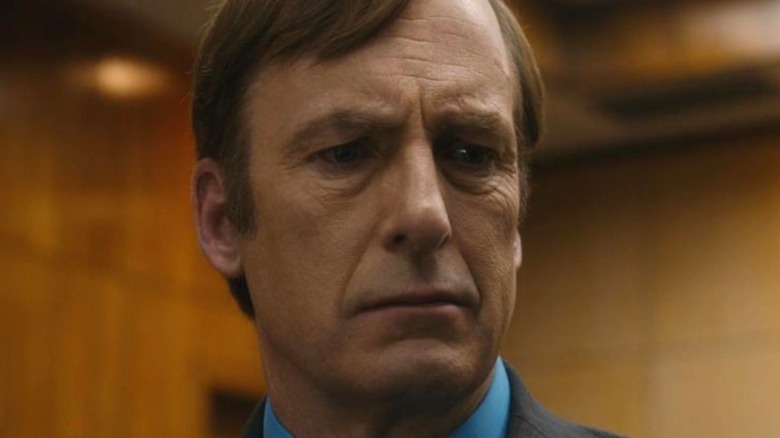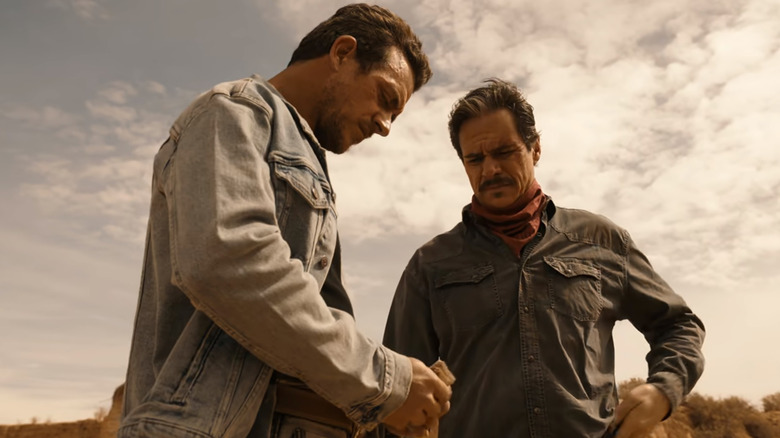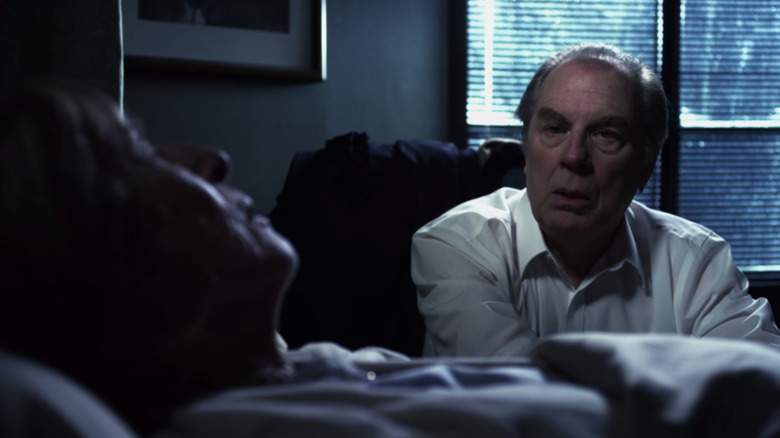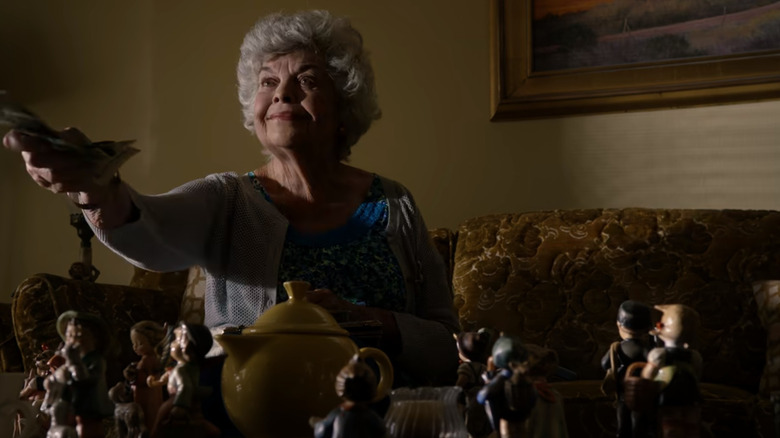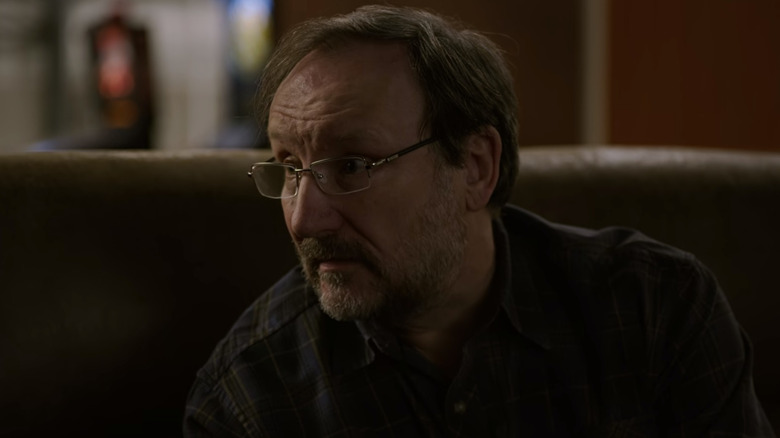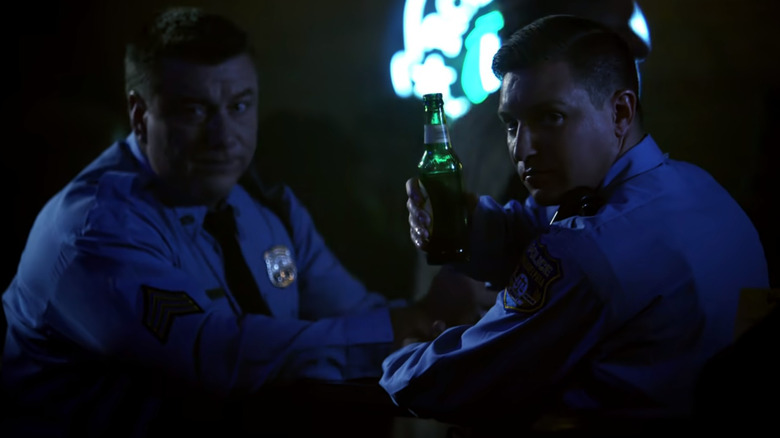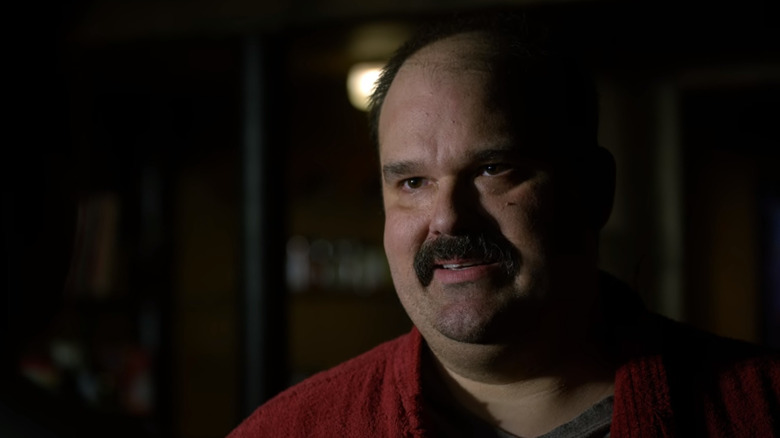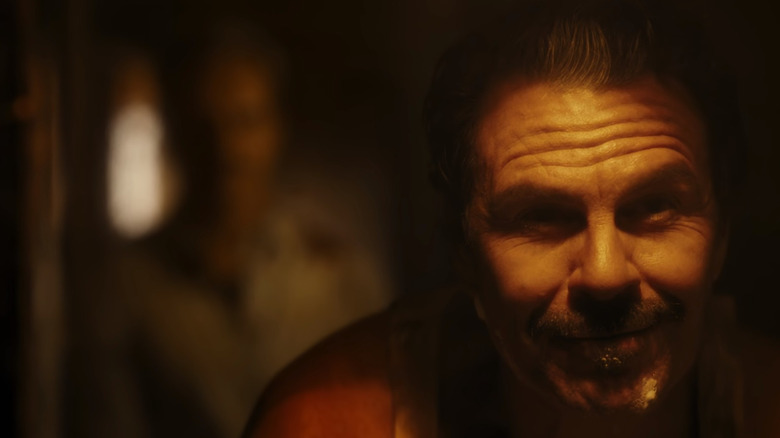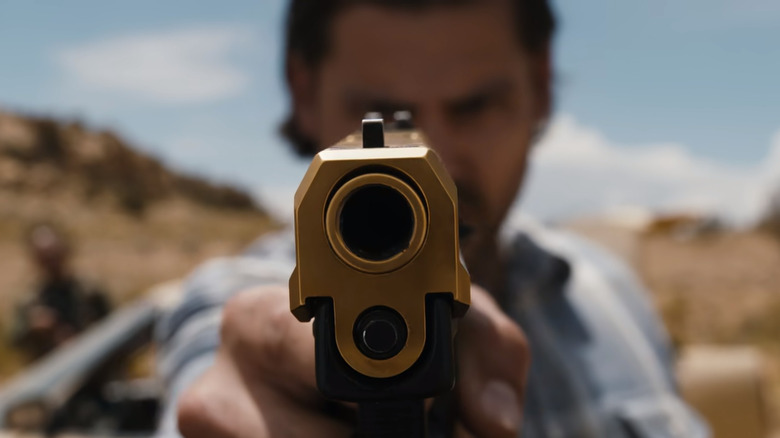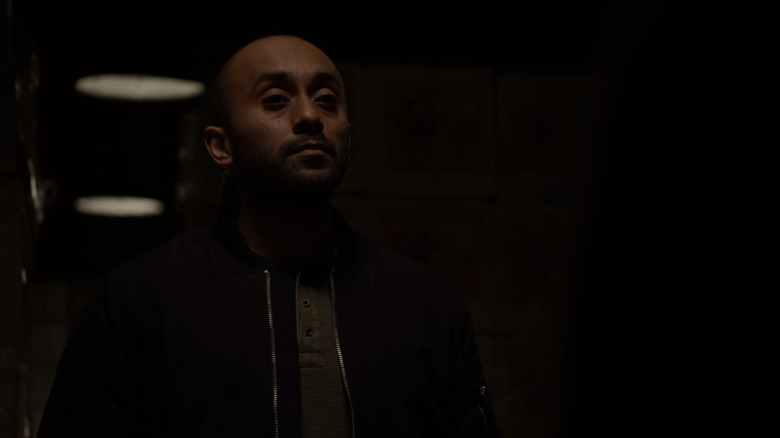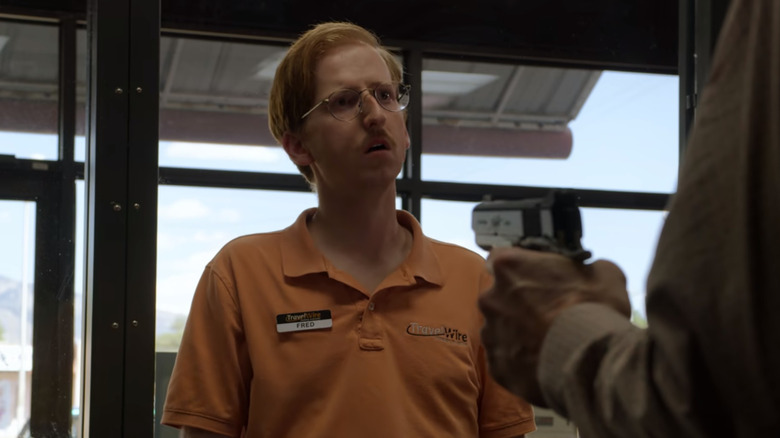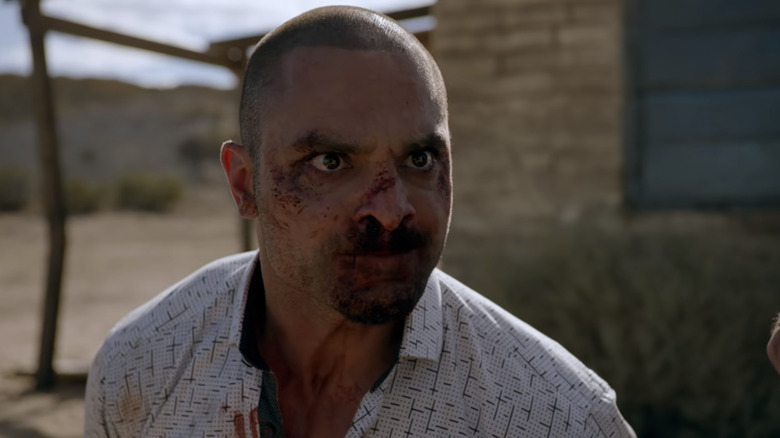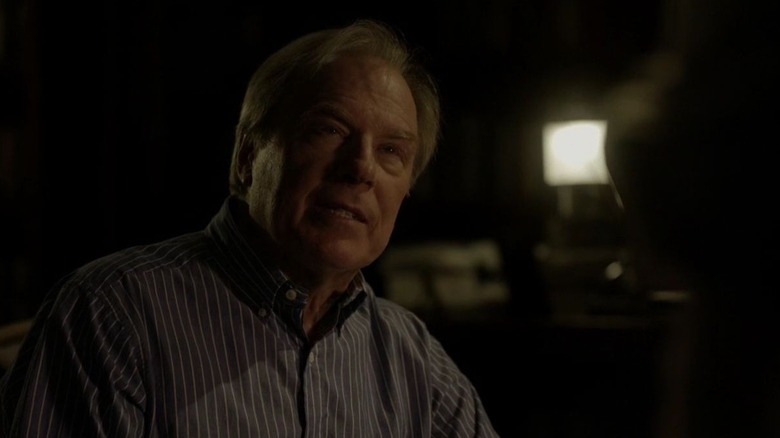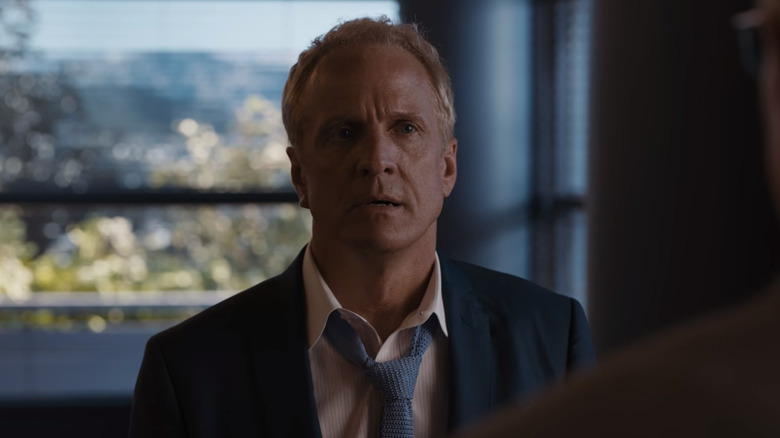The Most Unexpected Deaths In Better Call Saul Ranked
Nobody expected "Better Call Saul" to become the show it is today. When AMC announced back in 2013 (via Variety) that Saul Goodman would be getting his own prequel spin-off, most people would have expected little more than a pale imitation of "Breaking Bad." Who could blame them? Saul mostly exists in "Breaking Bad" to provide some much-needed comic relief as Walter White and Jesse Pinkman's lives become ever darker and his character certainly doesn't hold the same depth as, say, Gus Fring or Hank Schrader. A spin-off for this guy? Really?
Well, look where we are now. "Better Call Saul" has run for six seasons, garnered dozens of award nominations and wins, won the near-universal approval of critics, and provoked confusing feelings about Tony Dalton in the hearts and minds of millions of people around the world. Not bad for a show that started out as a joke.
One of the most remarkable things about "Better Call Saul" is that, while it could have coasted along as a screwball comedy or a courtroom satire, co-creators Peter Gould and Vince Gilligan instead chose to bring it closer to "Breaking Bad" in tone. By the fifth and sixth seasons, the show had become just as tense, brutal, and shocking as its older sibling, if not more so. Need proof? Take a look at the show's many deaths, which range from the predictable to the jaw-droppingly surprising. These are the most unexpected deaths in "Better Call Saul," ranked.
13. The coyotes
Never mess with Lalo Salamanca. Introduced in the Season 4 episode "Coushatta," Lalo is a nephew of the crime lord Hector Salamanca and a member of the same family that has provided the "Breaking Bad" universe with such villains as Tuco and the cousins.
Lalo isn't like the rest of the family, though. He's wilder than Hector, cleverer than Tuco, and more disruptive and rebellious than the cousins. From the moment he arrives in Albuquerque, Lalo acts as a terrifying wildcard who, despite his ostensible charm, is more than happy to torture, kill, and burn his way to getting what he wants. There's a reason Jimmy and Kim react the way they do when Lalo returns at the end of "Plan and Execution."
With all this in mind, then, we can safely say that there are no deaths in "Better Call Saul" less surprising than those of the two human traffickers in Season 6's "Wine and Roses." When Lalo escapes from a close-call assassination attempt in Mexico, he hoofs it to the border with the intention of returning to Albuquerque and exacting his revenge. To do so, he pays two traffickers and hops into the back of a truck with a group of immigrants. After a phone call with Hector, however, Lalo changes his mind; he tells the smugglers he won't be going after all and politely asks for his money back. They refuse while laughing in his face, but anybody who has paid a modicum of attention to this show immediately realizes what will happen next. Classic Lalo.
12. Ruth McGill
Considering so much has taken place in "Better Call Saul" over the course of its six seasons, you'd be forgiven for forgetting about Ruth McGill. As her name suggests, Ruth is the mother of Jimmy and Chuck McGill, although she only appears briefly in the Season 2 episode "Klick."
The episode opens with a flashback. Jimmy and Chuck are in a hospital, sitting beside their dying and comatose mother. Jimmy heads out to get them both some food and while he's gone, Ruth wakes up. She calls out for Jimmy, and although Chuck assures her that he's there, she asks for Jimmy again — and then she passes away. The devastation on Chuck's face is unmistakable, but it's nothing compared to what comes next. When Jimmy returns and learns what has happened, he asks Chuck whether she said anything before she died. Chuck simply tells him, "No."
Few moments in "Better Call Saul" encapsulate Chuck's relationship with Jimmy better than this, and his heartbreaking resentment towards his younger brother later becomes vitally important to the show's plot. That said, nobody can call Ruth's death unexpected — after all, it's kind of the whole point of the scene.
11. Geraldine Strauss
The untimely death of Geraldine Strauss doesn't come as much of a shock either, mostly because it's not untimely at all.
Geraldine isn't exactly a key player in the criminal machinations of the "Breaking Bad" universe, so don't feel too bad if you've got no idea who she is. Introduced in the Season 1 episode "Alpine Shepherd Boy," Geraldine is a client of Jimmy's who quickly takes a shine to her new lawyer. Since this takes place in the show's early days, though, her work with Jimmy is not so much money laundering and gang murder as it is boilerplate estate planning.
Geraldine appears a few more times over the next few seasons. She stars in Jimmy's commercials in Season 2 and voices her support for him at a bar hearing in Season 3. However, in the Season 4 episode "Piñata," Jimmy is informed by Geraldine's nephew that she has passed away. Although some kinks in her will still need sorting out, Jimmy, who is no longer practicing law, declines to take the job. A despondent Jimmy then returns home and watches the old commercial he once made with Geraldine.
Jimmy's work for Geraldine back in Season 1 was simple yet respectable, and her death marks the end of the honest side of his legal career. This is a crucial development in his progression towards Saul Goodman and, considering we all knew Jimmy would become Saul eventually, felt inevitable from the very beginning.
10. Werner Ziegler
Werner Ziegler never stood a chance. Mike Ehrmantraut hires this affable engineer to supervise the construction of Gus Fring's meth superlab. First appearing in Season 4's "Quite a Ride," Werner and his team of German workers toil to get their job done, working in secrecy for months with no outside contact and few opportunities to relax. While the rest of the crew just about makes it out the other side, Werner begins to crack.
Werner's first big mistake comes after Mike convinces Gus to allow the workers a night on the town to recuperate. After leaving him alone for a minute, Mike finds him drunkenly explaining the technical specifications of the superlab project to a patron at a bar. After a stern word (and an implicit threat) from Mike, Werner apologizes and swears never to do it again. Soon, a homesick Werner attempts to flee the construction site to return to Germany to see his wife, Margarethe. Finally, Lalo Salamanca calls Werner and tricks him into revealing the involvement of a man named "Michael" in Gus' secret project. By the time Mike catches him, it's too late, and, on Gus' orders, Mike executes Werner with a shot to the head.
It's a tragic end for a character who couldn't cope with the pressures of Gus and Mike's world. But Werner is given more than enough chances to apologize, move on, and finish his job, yet – perhaps because he underestimates Gus, or perhaps due to his worsening mental state — chooses to push his luck time and time again. The consequences are hardly surprising.
9. Hoffman and Fensky
Hoffman and Fensky's deaths were predictable in one sense yet unexpected in another. These are the two crooked cops who, before the show's events, befriended their colleague Matt Ehrmantraut. When Hoffman and Fensky offer to cut Matt in on their corruption, the young Ehrmantraut agrees. However, when the two cops become suspicious that Matt will rat them out, they ambush him, shoot him dead, and cover up their tracks to avoid suspicion.
During a flashback in the Season 1 episode "Five-O," Matt's father, Mike, confronts Hoffman and Fensky in a bar, claiming to know that they killed his son. As an inebriated Mike stumbles home, they pick him up in their cop car and take him outside the city, where they intend to shoot him. As it turns out, though, Mike has been sober the whole time. He pulls out a hidden second gun and, after a brief firefight, kills them both.
Now, we all know that Mike makes it to "Breaking Bad," so it's not like anybody thought these two small-time cops would make it out unscathed. However, the violent deaths of Hoffman and Fensky, which occur in the show's sixth episode, totally upend the relatively low-key atmosphere of the show so far. Mike's first murder establishes what "Better Call Saul" was setting itself up to be.
8. Marco Pasternak
Once Jimmy's closest friend, the fact that Marco Pasternak is neither mentioned nor appears in "Breaking Bad" offered a pretty good indication of his eventual fate. Marco shows up in "Marco," the tenth episode of Season 1, during which Jimmy returns to his hometown of Cicero after suffering a nervous breakdown. Like Jimmy, Marco is an expert con artist, and the two quickly return to their old ways.
After a week-long scamming binge, Jimmy decides to return home. Marco, disappointed, asks that Jimmy at least take part in one last scam before he leaves — but it all goes wrong. Marco is supposed to pretend to be unconscious, but when Jimmy attempts to bring him back around, he doesn't wake up. After Jimmy calls for an ambulance, Marco wakes up, tells him that this was the greatest week of his life, and passes away.
No death is meaningless in "Better Call Saul," and Marco's heart attack — as well as the week that preceded it — compels Jimmy to give up spending his life trying to do the right thing. In that respect, Marco is a necessary sacrifice the show had to make to bring Jimmy that much closer to Saul. Nevertheless, the sudden nature of his death, right in the middle of a complex and deeply satisfying scam, means it does come as something of a surprise to the unassuming viewer.
7. Sylvia and Mateo Ramos
Alas, poor Sylvia and Mateo. The Ramos' make only a brief appearance in "Wine and Roses," the first episode of Season 6 of "Better Call Saul," and although their association with Lalo marks them for death pretty much immediately, it's surprisingly difficult to figure out exactly what's going to happen to them until it's far too late.
In the aftermath of the attack on his Mexico compound, Lalo turns up at the Ramos' home. Apparently, both Sylvia and Mateo know him well, as Mateo's dental surgery was funded by Lalo, and they trust him enough to offer him breakfast. For a while, it seems like Lalo has genuinely come to these people for assistance. Soon enough, though, a growing sense of unease begins to permeate the scene. When Lalo insists that Mateo keep his mustache and soul patch while shaving, it becomes obvious that something sinister is about to happen.
Everything goes a bit "Scream" after that, when Lalo turns a pair of scissors into a makeshift knife and approaches Sylvia from behind. Next, he appears behind Mateo (who now looks suspiciously like Lalo himself) in the bathroom mirror. Sylvia is never seen again, and the next time Mateo shows up, he has been burned and deformed and planted in the compound to convince the authorities that Lalo is dead. It's a brutal scene, one that brings a dash of slasher horror to "Better Call Saul" and proves that there's no line that Lalo Salamanca won't cross.
6. Jefe's gang
"Bagman" is by far the best episode of Season 5 of "Better Call Saul" and arguably one of the entire series. The plot finds Jimmy tasked with picking up Lalo's bail money — some $7 million in cash — at a rendezvous in the Mexican desert. For a while, it seems like the drop has gone off without a hitch. Jimmy meets the cousins at the designated meeting point, takes the money, and heads for the border.
On the way home, he is forced to stop by an SUV filled with armed men, led by a gangster who is named in the show's credits as "Jefe." The men search Jimmy's car, quickly finding the money, while Jefe orders one of his men to kill Jimmy. Of course, we all know that Saul Goodman doesn't die in the Mexican desert in 2004, but that doesn't make what happens next any less surprising. Half a second before he can pull the trigger, Jefe's henchman is shot in the neck by a hidden gunman. Then the next one goes down, and then the next, and in the space of about a minute, every gang member but one has been wounded or killed.
Of course, only one "Breaking Bad" character could ever pull off a stunt so ruthless and efficient, and the rest of the episode deals with Jimmy and Mike's journey home through the unforgiving desert. It's a remarkable and thrilling episode that proves full well that Vince Gilligan can still surprise people — and it all begins when that first shot rings out.
5. Arturo Colon
Arturo Colon meets perhaps the most unpleasant fate of any character in "Better Call Saul." Arturo is a lieutenant to Hector Salamanca who makes frequent appearances during the show's second, third, and fourth seasons. He helps the Salamanca drug lord run his operation in Albuquerque and comes into occasional conflict with Victor and Tyrus, two underlings who work for Gus Fring.
In the suitably named episode "Breathe," Arturo and his colleague, Nacho, collect a drug pickup from one of Gus' factory farms. When a dispute arises concerning the amount of product Arturo and Nacho will receive, Victor and Tyrus stand their ground, emboldened by Hector Salamanca's recent hospitalization. In the end, Hector's guys win out by threatening Gus' men and depart with the drugs.
That's not the end of it, though. On their way back to their car, Arturo and Nacho are ambushed by Victor and Gus himself. Nacho is held at gunpoint while Gus zip-ties a plastic bag around Arturo's head. They then tie his hands and legs and wait for him to suffocate to death. Aside from being pretty distressing, Arturo's death also comes out of absolutely nowhere, demonstrating Gus' propensity towards unexpected violence in a way not seen since "Box Cutter," the "Breaking Bad" episode in which — funnily enough — his victim is none other than Victor.
4. Fred Whalen
In the sagas of Jimmy McGill and Walter White, the most shocking and tragic deaths are often those of innocent bystanders. Drew Sharp in "Breaking Bad," for example, or the passengers of Wayfarer 515. Equally, there's something to be said for the people who died largely unnecessary deaths for the benefit of more evil characters, such as the Gale Boetticher or even Mike Ehrmantraut.
Fred Whalen falls into both of these categories. An employee at a money transfer office in Albuquerque, Fred is drawn into the world of "Better Call Saul" when Mike interrogates him about Werner Ziegler, who stopped in his office to make some calls during his escape from Gus' superlab. Later, Fred is visited by Lalo, who is attempting to track Werner himself to find out what Gus is up to. When Lalo asks to see the security footage of Werner, Fred becomes suspicious and suggests that Lalo — who claims to be a friend of Mike and Werner — call the police instead. At that point, Fred's fate is sealed. As Fred takes a phone call, Lalo climbs into the ceiling, leaps down into his booth, and murders him off-screen.
Shows such as "Better Call Saul" and "Breaking Bad" often feature characters who make a point of not harming people who aren't "in the game." Lalo, though, is different, and his brutal and unnecessary murder of Fred Whalen is a frightening and sudden reminder that he is anything but an ordinary gangster.
3. Nacho Varga
Nacho Varga is one of the greatest characters in either "Better Call Saul" or "Breaking Bad." Nacho's journey through the darkest depths of Albuquerque's criminal underworld is gripping. Nacho is ambitious, intelligent, loyal, and surprisingly tender, and his death scene, which is equal parts heartbreaking and awesome, more than does his character justice.
The end of Nacho's story begins when Gus Fring coerces him into betraying Lalo by allowing a team of assassins to enter his compound. During the ensuing firefight, Nacho flees on foot and attempts to make it back home. However, Gus has no intention of allowing Nacho to live, so the two men set up a deal where Nacho will accept his death and go along with Gus' plan if Gus and Mike agree to keep his father out of harm's way.
Nacho is subsequently picked up by Mike, who, along with Gus and Victor, attend a meeting with Hector Salamanca and his cronies. Nacho claims that he was hired by the Peruvian cartel and insists that Gus had nothing to do with Lalo's apparent demise. Before he can be executed, Nacho delivers a vicious tirade against the Salamancas, confessing that he caused Hector's stroke by switching his medication for empty capsules. Finally, Nacho breaks free of his ties using a hidden shard of glass, steals a gun, and shoots himself in the head.
The entirety of "Rock and Hard Place" is a lead-up to Nacho's death. But the manner of his death — going out on his terms after stunning and enraging his enemies — makes for one of the most unexpected moments in "Better Call Saul."
2. Chuck McGill
The relationship between Jimmy and Chuck McGill is the cornerstone of "Better Call Saul." Chuck is a renowned lawyer and co-founder of Hamlin, Hamlin & McGill. Despite his brilliant intelligence and high-flying career, Chuck harbors a deep resentment towards his troublesome younger brother. Meanwhile, Jimmy cares for and adores his older sibling. However, when he turns against him as their relationship deteriorates, Jimmy becomes so vindictive and desperate in his attempts to outdo him that it inadvertently leads to Chuck's death.
The first few seasons of "Better Call Saul" deal with the back-and-forth between Jimmy and Chuck, who constantly scheme against each other as their fraternal bonds grow weaker. This culminates with Chuck's humiliation in the courtroom — a consequence of Chuck's belief that he is hypersensitive to electromagnetic fields — and Jimmy's disbarment. Seeking revenge, Jimmy leaks the details of Chuck's apparent condition to HHM's malpractice insurer, leading to a potential increase in the firm's premiums. Howard Hamlin, Chuck's colleague and fellow partner, then buys out his share of the firm and forces Chuck to retire.
This is all par for the course in Jimmy's "Better Call Saul" storyline. While Chuck's admission that he never cared for Jimmy during the latter's attempt to make things right come as a harsh surprise, the real shock comes after. Chuck, having lost pretty much everything, intentionally knocks over a lantern, burns down his own house, and kills himself in the process. Chuck's death may have felt inevitable, especially considering its role in Jimmy's fall from grace, but it is both heart-wrenching and startling.
If you or anyone you know is having suicidal thoughts, please call the National Suicide Prevention Lifeline at 1-800-273-TALK (8255).
1. Howard Hamlin
Howard Hamlin is not the villain in "Better Call Saul." This may come as some surprise to viewers since Howard initially seems like he exists solely to play an antagonistic role in Jimmy's life. But most of Jimmy's problems are actually down to Chuck, while Howard plays a reluctant role in supporting the older McGill's plotting. In fact, Howard is a decent human being and his violent death halfway through Season 6 is as stunning as they come.
From the end of Season 5, Jimmy and Kim dedicate their entire lives to ruining Howard's reputation as a lawyer. It takes a lot of effort, but their plan pays off, and HHM is forced to settle an important legal case. Howard arrives at Jimmy and Kim's apartment to confront them, calling them "soulless" and accusing them of "getting off" on their cons. It's a dramatic end to the episode that takes a turn into the out-and-out terrifying when Lalo Salamanca shows up.
Lalo is very much on his own mission here and calmly states that he wishes to speak to his lawyers. Howard doesn't understand what's happening until Lalo takes out a pistol and screws on a silencer. Before Howard can even speak a full sentence, Lalo executes him with a single shot to the head.
During his entire time in "Better Call Saul," Lalo acts like a monster in the shadows, wreaking havoc and death wherever he goes. His murder of Howard, however, represents an immediate and alarming shift in the "law drama" side of the show's story, kicking things up to 11 and sending the whole series careening towards its destructive climax.
